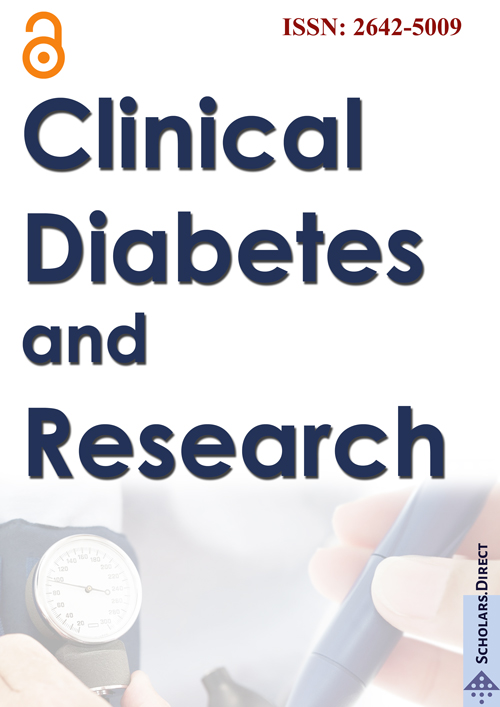Glargine U300 Insulin as a Better Option than Degludec U100 to Treat a Congenital Generalized Lipodystrophy Patient
Berardinelli-Seip Congenital Lipodystrophy (BSCL) is a rare autosomal recessive syndrome characterized by a generalized lack of adipose tissue, evolving with diabetes mellitus, dyslipidemia, and hepatic steatosis. There are approximately 500 cases described worldwide, and in the Rio Grande do Norte, Brazil, we have the largest series of patients followed in one single center worldwide [1].
Because of the scarcity of subcutaneous fat tissue and the extreme insulin resistance, the use of high daily doses of insulin by these patients usually is a problem. Insulin application guidelines are concerned with the possibility of lipodystrophies occurring at the sites of insulin injection but do not suggest changes in the application techniques in patients with BSCL [2]. There is no data specifically about the skin of Berardinelli-Seip patients. However, it seems the skin anatomy of these patients is not different of that of healthy persons. In the other hand, they do not have the fat layer under the skin to form the depot of insulin. The use of more concentrated insulin, like the recently released insulin Glargine U300 (300U for each one mL of injection solution, instead of 100U), is a possibility to minimize this problem.
We report a case of a 29-year-old female diabetic patient with BSCL type 2 (insertion mutation in the position 669 of BSCL2 gene that codes the seipin protein-Gng3lg669insA). She was on Degludec U100 130U/morning and Aspart 35U before breakfast, 37U before lunch and 37U before dinner, subcutaneously. She injected the insulin in the abdomen, arms or legs, with 6 mm needles, according to medical advice. She had complained of some rare episodes of hypoglycemia. Trying to decrease the large volume of insulin injected, we changed the Degludec insulin to Glargine U300, maintaining the same daily dose (130U) and time of injection. Aspart insulin dose was not changed. Patient collected blood tests before and one month after the use of Glargine U300 (Table 1). Glycated hemoglobin (A1c) decreased 0.9% in one month, achieving the lowest value of the last 14 months. The patient did not report any symptomatic episode of hypoglycemia. When asked for the preference between the two long-acting insulin, she preferred the Glargine U300 due to the smaller volume injected.
Based on the literature, glargine U300 and Degludec usually have the advantage of less hypoglycemia, with no difference in the efficacy of A1c reduction [3,4]. After only one month of Glargine U300 use, our BSCL patient decreased A1c, probably indicating a better glycemic control. This improvement was not related to the insulin's properties, once we replaced insulin with equivalent efficacy on reducing blood glucose [5]. In our series of BSCL patients [1], some patients sometimes skip insulin injection because of the large volume of insulin causing discomfort in the local of application. The more concentrated Glargine U300 allows the use of the same dosage of insulin with one-third of the insulin volume, improving adherence to treatment. In the case of our patient, the volume decreased from 1.3 mL (130U of U100 insulin) of Degludec to 0.4 mL of Glargine (130U of U300 insulin). In conclusion, we report the first case of BSCL on Glargine U300, showing better glycemic control. More concentrated insulin, like Glargine U300, may be a better option for these patients.
Duality of Interest
No potential conflicts of interest relevant to this article were reported.
Author Contributions
J.G.L collected, analyzed and wrote the manuscript. N.N.L analyzed and wrote the manuscript. L.H.C.N., R.L.M.L, and M.F.P.B reviewed and edited the manuscript.
References
- Lima JG, Nobrega LH, de Lima NN, et al. (2016) Clinical and laboratory data of a large series of patients with congenital generalized lipodystrophy. Diabetol Metab Syndr 8: 23.
- American Diabetes Association (2004) Insulin administration. Diabetes Care 27: S106-S109.
- Riddle MC, Bolli GB, Ziemen M, et al. (2014) New insulin glargine 300 units/mL versus glargine 100 units/mL in people with type 2 diabetes using basal and mealtime insulin: glucose control and hypoglycemia in a 6-month randomized controlled trial (EDITION 1). Diabetes Care 37: 2755-2762.
- Zinman B, Philis-Tsimikas A, Cariou B, et al. (2012) Insulin degludec versus insulin glargine in insulin-naive patients with type 2 diabetes: a 1-year, randomized, treat-to-target trial (BEGIN Once Long). Diabetes Care 35: 2464-2471.
- Freemantle N, Chou E, Frois C, et al. (2016) Safety and efficacy of insulin glargine 300 u/mL compared with other basal insulin therapies in patients with type 2 diabetes mellitus: a network meta-analysis. BMJ Open 6: e009421.
Corresponding Author
Josivan G Lima, Hospital Universitario Onofre Lopes, UFRN, Natal, RN, Brazil.
Copyright
© 2017 Lima JG, et al. This is an open-access article distributed under the terms of the Creative Commons Attribution License, which permits unrestricted use, distribution, and reproduction in any medium, provided the original author and source are credited.




